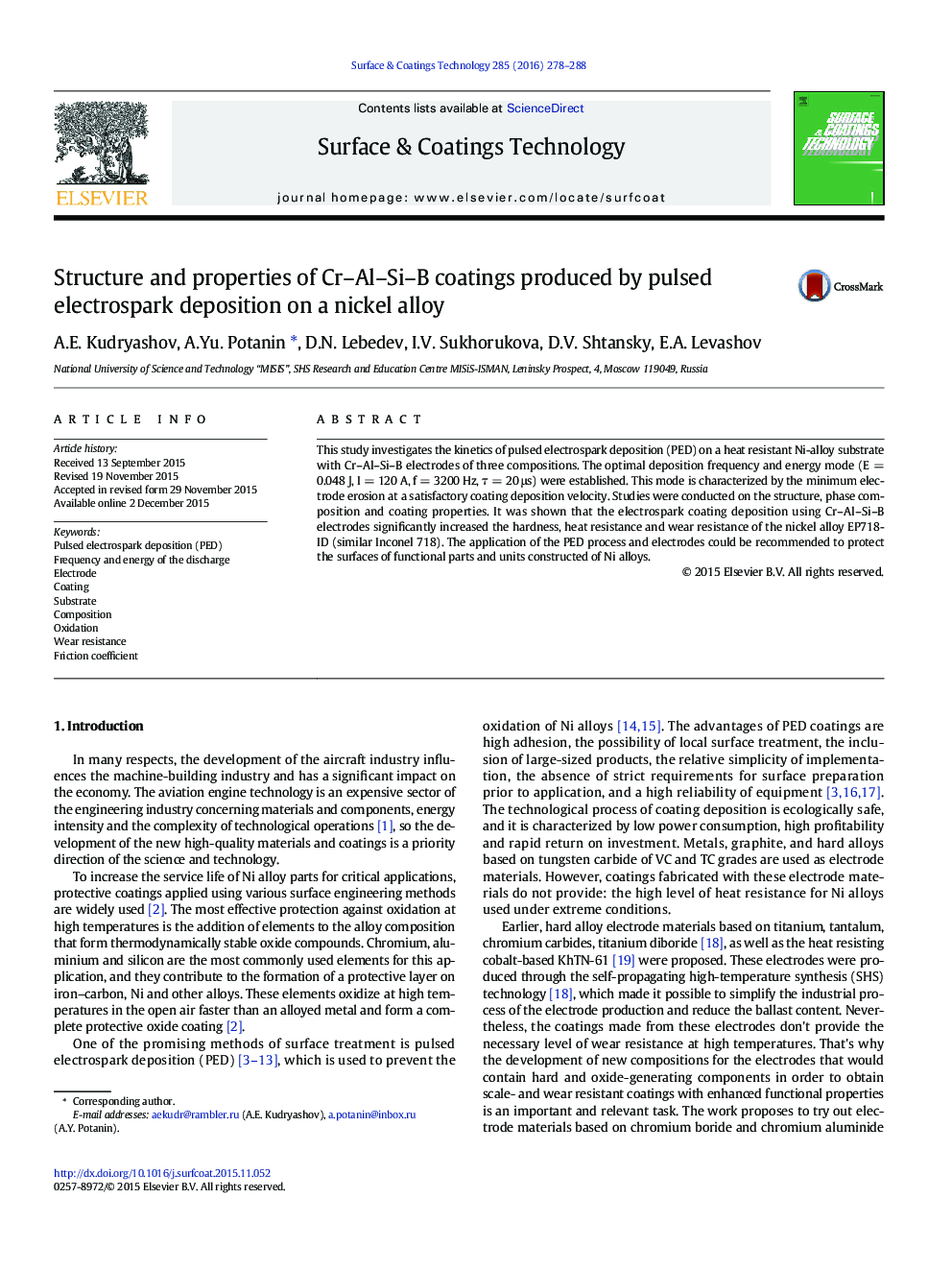| Article ID | Journal | Published Year | Pages | File Type |
|---|---|---|---|---|
| 1656575 | Surface and Coatings Technology | 2016 | 11 Pages |
•Erosion rate and cathode weight increment connected with CrB, Cr(Si,Al)2, Cr5Si3, Cr4Al11 content•With the increased content of low-melting phases the coating is formed more rapidly, roughness — 3 μm.•Phase and chemical composition of coating depend on electrode composition, parameters of PED.•Coating results in the increased friction coefficient at 500 °C, reduced wear rate due to Al2O3 layer.•PED coating with Cr–Al–Si–B electrodes increases the hardness, heat- and wear resistance of Ni-alloy.
This study investigates the kinetics of pulsed electrospark deposition (PED) on a heat resistant Ni-alloy substrate with Cr–Al–Si–B electrodes of three compositions. The optimal deposition frequency and energy mode (Е = 0.048 J, I = 120 A, f = 3200 Hz, τ = 20 μs) were established. This mode is characterized by the minimum electrode erosion at a satisfactory coating deposition velocity. Studies were conducted on the structure, phase composition and coating properties. It was shown that the electrospark coating deposition using Cr–Al–Si–B electrodes significantly increased the hardness, heat resistance and wear resistance of the nickel alloy EP718-ID (similar Inconel 718). The application of the PED process and electrodes could be recommended to protect the surfaces of functional parts and units constructed of Ni alloys.
